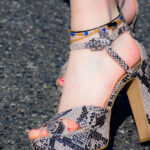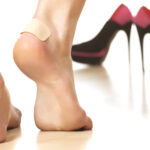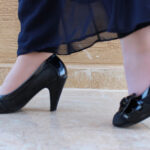Do you love the look of block heels but hate the noise they make as you walk? Here are some simple ways to quiet those clacking shoes.
There’s nothing worse than a noisy block heel, but with these simple tips, you can make them quieter in no time! By adding a layer of felt or cork to the bottom of your shoes, you can eliminate much of the noise they make when you walk. You can also try using shoe inserts or doubling up on socks to achieve the same effect.

If you’re like me, you love block heels, but they can be so loud! Here are some ways how to make block heels quiet. Try them out and see which one works best for you. With a little bit of effort, you can have peace and quiet while rocking those stylish block heels!
Why Do Block Heels Make Noise?
The hard material of the heel can create a clicking sound against surfaces. They often have a narrow and pointed shape, which can cause them to easily stick to the ground and make noise with each step.
Moreover, the fit of the shoe can also contribute to the noise. If they are too loose or ill-fitting, they will create more noise as they rub against your feet with each step.
Additionally, if the heel is not securely attached to the shoe, it can create a rattling sound with movement.
What Will You Need
- Felt or cork
- Shoe inserts
- Extra socks
- Glue
- Scissors
With these materials, you can easily add a layer of cushioning to your block heels and reduce the noise they make.
10 Steps on How to Make Block Heels Quiet
Step 1. Add a Layer of Felt or Cork
Adding a layer of soft material, such as felt or cork, to the bottom of your heels can dampen the sound they make as you walk. Make sure to trace the outline of your heel onto the material and cut it out before adding a layer of glue to attach it securely. Because cork is a bit thicker, it may take longer to dry and secure.
Step 2. Try Shoe Inserts
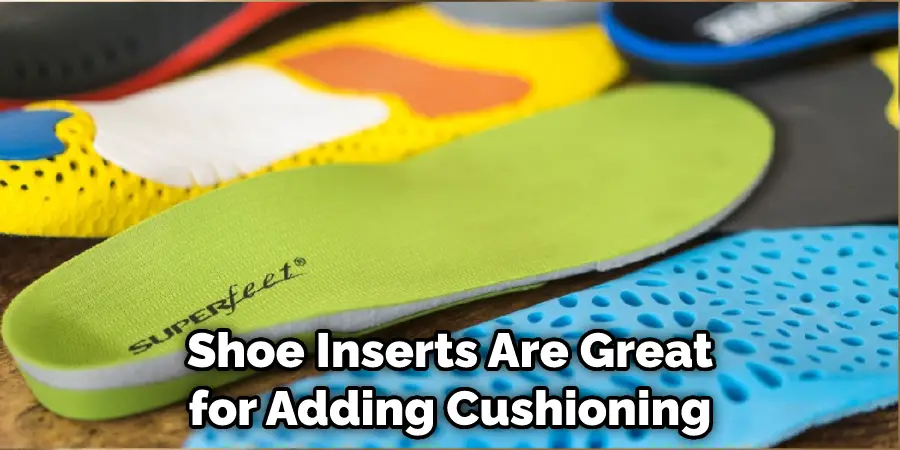
Shoe inserts are great for adding cushioning and support to your shoes, and they can also help quiet noisy heels. Look for ones specifically designed for high heels, or cut them to fit the shape of your block heel. Because the inserts add an extra layer between the heel and the ground, they can help reduce noise and make walking quieter.
Step 3. Use Adhesive Rubber pads
Adhesive rubber pads often used to prevent slipping on slick surfaces, can also reduce noise in block heels. Simply stick them onto the bottom of your heels for added cushioning and noise reduction. Make sure to choose a size and shape that fits your heel, and replace them as needed.
Step 4. Double up on Socks
If you don’t have any of the materials mentioned above, try doubling up on socks. This adds an extra layer between your foot and the shoe, reducing the noise from rubbing and also adding cushioning. It is a quick and easy solution for quieter block heels.
Step 5. Check the Fit
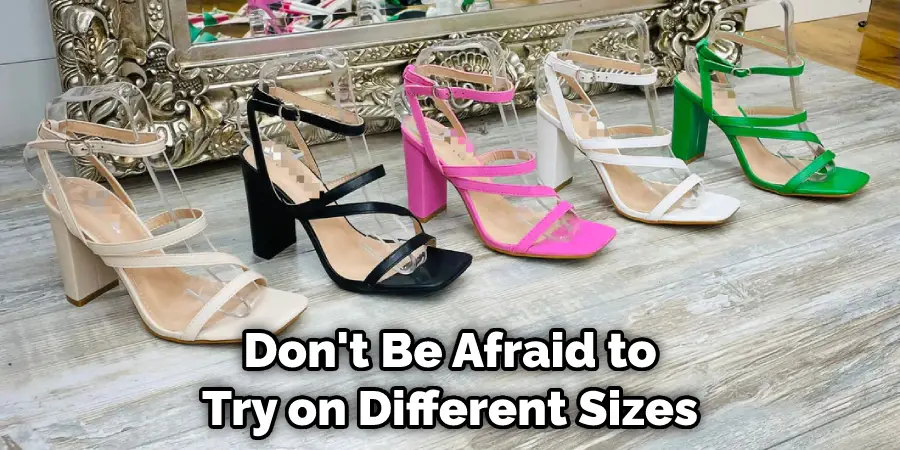
Ensure your block heels fit properly and aren’t slipping or rubbing against your foot as you walk. A snug fit will help eliminate noise from the shoe rubbing against your foot with each step. Don’t be afraid to try on different sizes or widths until you find the right fit for your foot.
Step 6. Secure Loose Heels
If your heels are loose or not securely attached to the shoe, they can create a rattling sound with movement. Use strong adhesive or have them professionally repaired to secure the heel and reduce noise. Be careful not to glue the heel onto your foot in the process!
Step 7. Use Noise-Reducing Soles
Some shoe soles are specially designed to reduce noise, such as those made from rubber or foam material. Look for these types of soles when replacing the ones on your block heels, or try attaching noise-reducing stick-on soles for a quick fix. This can also add cushioning and comfort to your block heels.
Step 8. Use Silicone Gel Heel Grips
Silicone gel heel grips are often used to prevent slipping in heels, but they can also add cushioning and reduce noise. Simply attach them to the back of your heels for added comfort and quieter walking. Make sure to choose a gel heel grip that fits your heel size and shape.
Step 9. Stuff the Toes
If your block heels have open toes, try stuffing them with soft material such as tissue paper or fabric. This can add cushioning and dampen the noise from your toes hitting the ground with each step. Use a small amount so that it doesn’t affect the fit of your shoe.
Step 10. Walk on Carpet or Grass
As a last resort, try to avoid noise-causing surfaces such as hardwood floors or concrete. Walk on carpet or grass to reduce the impact and noise from your block heels. Try to find quieter surfaces whenever possible.
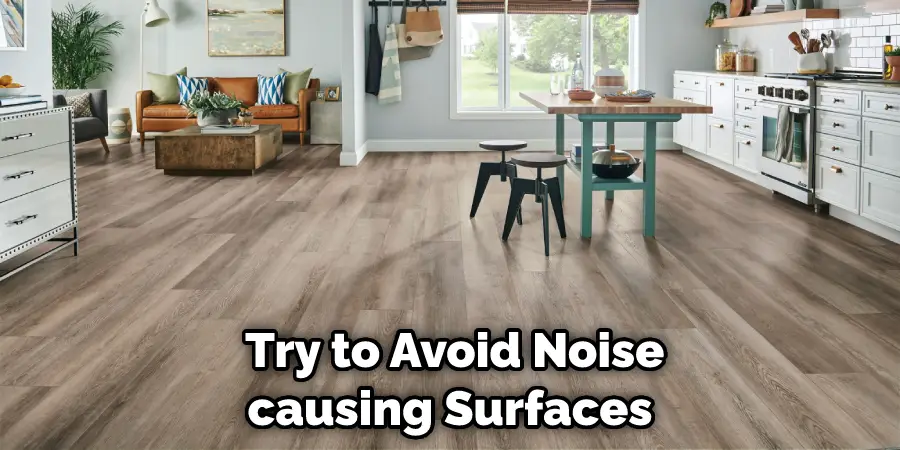
By following these steps, you can easily quiet noisy block heels and enjoy more comfortable, quieter walking.
5 Additional Tips and Tricks
1. Use Toe Protectors:
Stick-on toe protectors can add cushioning and reduce noise from your toes hitting the ground.
2. Use Heel Liners:
Insert heel liners for added cushioning and noise reduction in your heels.
3. Moleskin:
Cut moleskin to fit the inside of your shoes for added cushioning and noise reduction.
4. Stick-on Pads:
Use stick-on heels or sole pads for added cushioning and noise reduction.
5. Insoles:
Insert insoles for added cushioning, support, and noise reduction in your shoes.
These tips and tricks can be combined with the steps above for even quieter block heels. Happy quiet walking!
5 Precautions You Can Take While Making Block Heels Quiet
1. Carefully Use Adhesives:
Use caution when using adhesives, such as strong glue, to secure loose heels.
2. Use Tactile Soles:
Purchase block heels with textured or rubber soles, providing a good grip on the ground and reducing noise.
3. Apply Heel Tips or Cushions:
Replacing worn heel tips or using heel cushions can also help to decrease noise.
4. Add Protective Film or Fabric:
Apply a thin film or fabric to the bottoms of your heels, which will act as a buffer between the heel and ground surface.
5. Regularly Maintain Heels:
Check regularly for loose parts or worn materials and repair or replace them as necessary to keep noise at a minimum.
Taking Precautions while making block heels quiet will ensure the longevity and quietness of your shoes.
Can Applying Conditioner to the Leather of Block Heels Also Help Quiet Them Down?
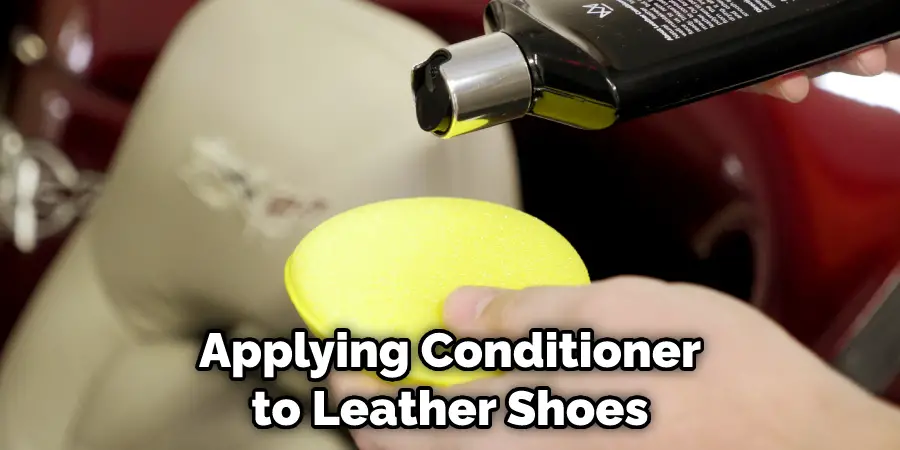
While applying conditioner to leather shoes can improve their overall appearance and durability, it may not impact reducing noise. Other steps, such as securing loose heels and using noise-reducing soles, will likely have a greater effect on quieting down block heels.
However, regularly maintaining and caring for your shoes can help to prevent excessive wear and noise in the long run. Overall, there is no harm in applying conditioner to the leather of your block heels – it may just be more effective to focus on other steps to quiet them down.
What Are the Best Conditioner Products to Use on Leather Block Heels?
There is no one “best” conditioner product, as it can vary depending on the specific type of leather and personal preferences. Some popular options include Lexol, Chamberlain’s Leather Milk, and Bickmore Bick 4. These can be found in stores or online. It is recommended to do a patch test on a small, inconspicuous area of the shoe before applying it to the entire shoe to ensure compatibility and desired results.
It may also be helpful to consult with a shoe repair or leather care store professional for recommendations specific to your shoes. Moreover, It may be helpful to do some research before selecting a conditioning product for your block heels.
Additionally, make sure to follow any instructions or guidelines provided with the chosen product for the best results. Because leather is a delicate material, it may also be beneficial to test the conditioner on a small, inconspicuous area before applying it to the entire shoe.
Conclusion
Although there are many ways to make your block heels quiet, the most important thing is finding a method that works for you. Experiment with different techniques and materials until you find an effective and comfortable combination. Remember, the goal is to enjoy your shoes without disturbing those around you. With a little effort, you can have the best of both worlds.
There you have it, my tips for how to make block heels quiet. I hope these help the next time you’re looking for a way to keep your heel noise to a minimum.
Hopefully, with these steps and precautions, you can enjoy both the style and quietness of your block heels. Happy quiet walking!


